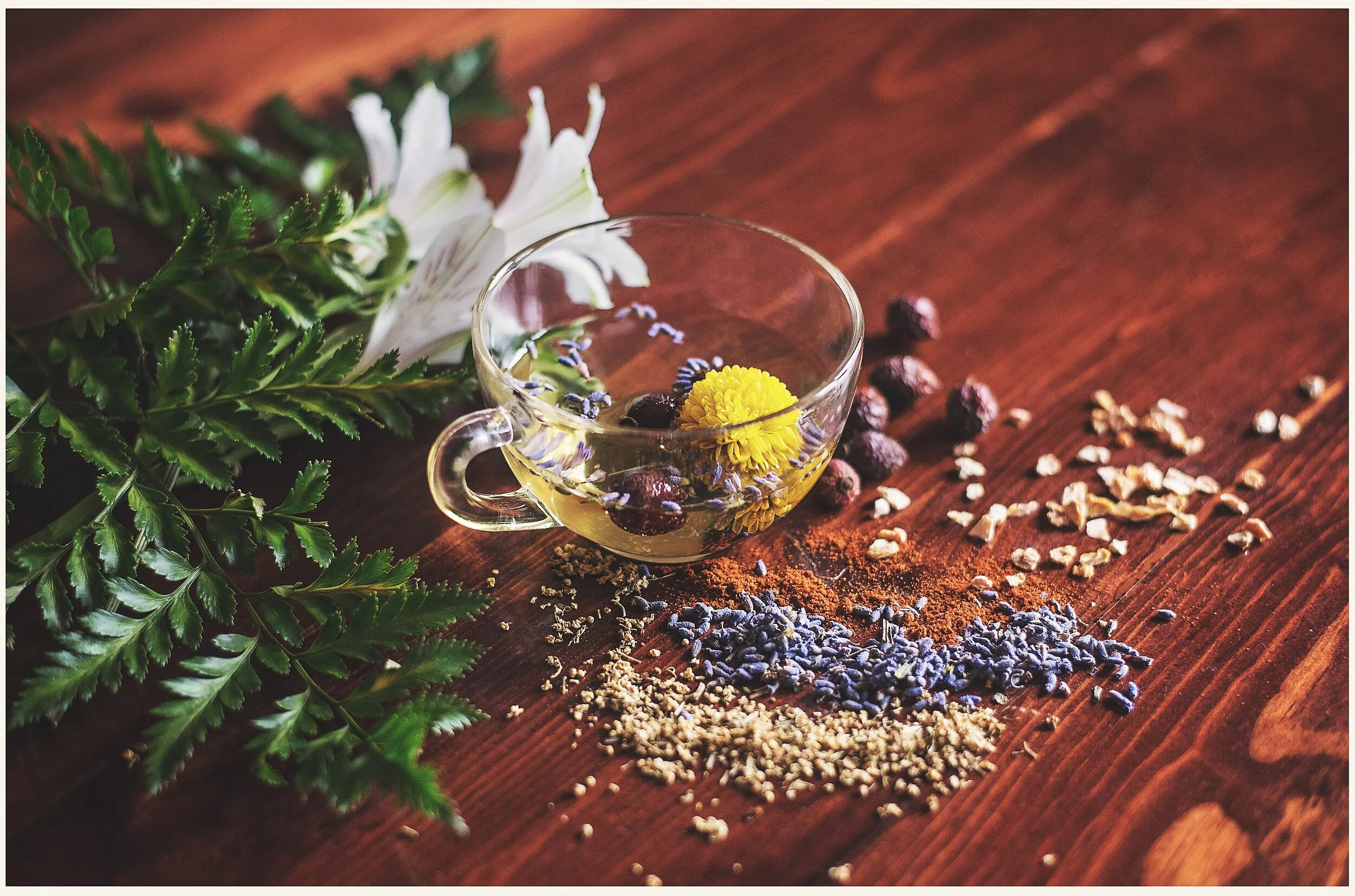A guide on how to use 5 simple Feng Shui Tips that can help you improve your home step by step.
Ayurveda Tips for Enjoying Spring
How to use Ancient Rituals to Ground Yourself
The Yogic Lifestyle: Simple, Conscious and Eco-Friendly
The Science of Sound
Get ready for the annual spring-clean of your house and yourself!
Happy Valentine: 30 tips for more self-love and happiness!
Happy Valentine! Here are 30 tips for more self-love and happiness!
“If you don’t love yourself, you cannot love others. You will not be able to love others. If you have no compassion for yourself then you are not able of developing compassion for others.”
Marc and Angel are the authors of 1000 Little Things Happy Successful People Do Differently. Here’s their amazing list of 30 things to start doing for yourself. If you enjoy this, be sure to visit their website for more inspirational advice and tips for life.
#1. Start spending time with the right people. – These are the people you enjoy, who love and appreciate you, and who encourage you to improve in healthy and exciting ways. They are the ones who make you feel more alive, and not only embrace who you are now, but also embrace and embody who you want to be, unconditionally.
#2. Start facing your problems head on. – It isn’t your problems that define you, but how you react to them and recover from them. Problems will not disappear unless you take action. Do what you can, when you can, and acknowledge what you’ve done. It’s all about taking baby steps in the right direction, inch by inch. These inches count, they add up to yards and miles in the long run.
#3. Start being honest with yourself about everything. – Be honest about what’s right, as well as what needs to be changed. Be honest about what you want to achieve and who you want to become. Be honest with every aspect of your life, always. Because you are the one person you can forever count on. Search your soul, for the truth, so that you truly know who you are. Once you do, you’ll have a better understanding of where you are now and how you got here, and you’ll be better equipped to identify where you want to go and how to get there. Read The Road Less Traveled.
#4. Start making your own happiness a priority. – Your needs matter. If you don’t value yourself, look out for yourself, and stick up for yourself, you’re sabotaging yourself. Remember, it IS possible to take care of your own needs while simultaneously caring for those around you. And once your needs are met, you will likely be far more capable of helping those who need you most.
#5. Start being yourself, genuinely and proudly. – Trying to be anyone else is a waste of the person you are. Be yourself. Embrace that individual inside you that has ideas, strengths and beauty like no one else. Be the person you know yourself to be – the best version of you – on your terms. Above all, be true to YOU, and if you cannot put your heart in it, take yourself out of it.
#6. Start noticing and living in the present. – Right now is a miracle. Right now is the only moment guaranteed to you. Right now is life. So stop thinking about how great things will be in the future. Stop dwelling on what did or didn’t happen in the past. Learn to be in the ‘here and now’ and experience life as it’s happening. Appreciate the world for the beauty that it holds, right now.
#7. Start valuing the lessons your mistakes teach you. – Mistakes are okay; they’re the stepping stones of progress. If you’re not failing from time to time, you’re not trying hard enough and you’re not learning. Take risks, stumble, fall, and then get up and try again. Appreciate that you are pushing yourself, learning, growing and improving. Significant achievements are almost invariably realized at the end of a long road of failures. One of the ‘mistakes’ you fear might just be the link to your greatest achievement yet.
#8. Start being more polite to yourself. – If you had a friend who spoke to you in the same way that you sometimes speak to yourself, how long would you allow that person to be your friend? The way you treat yourself sets the standard for others. You must love who you are or no one else will.
#9. Start enjoying the things you already have. – The problem with many of us is that we think we’ll be happy when we reach a certain level in life – a level we see others operating at – your boss with her corner office, that friend of a friend who owns a mansion on the beach, etc. Unfortunately, it takes awhile before you get there, and when you get there you’ll likely have a new destination in mind. You’ll end up spending your whole life working toward something new without ever stopping to enjoy the things you have now. So take a quiet moment every morning when you first awake to appreciate where you are and what you already have.
#10. Start creating your own happiness. – If you are waiting for someone else to make you happy, you’re missing out. Smile because you can. Choose happiness. Be the change you want to see in the world. Be happy with who you are now, and let your positivity inspire your journey into tomorrow. Happiness is often found when and where you decide to seek it. If you look for happiness within the opportunities you have, you will eventually find it. But if you constantly look for something else, unfortunately, you’ll find that too. Read Stumbling on Happiness.
#11. Start giving your ideas and dreams a chance. – In life, it’s rarely about getting a chance; it’s about taking a chance. You’ll never be 100% sure it will work, but you can always be 100% sure doing nothing won’t work. Most of the time you just have to go for it! And no matter how it turns out, it always ends up just the way it should be. Either you succeed or you learn something. Win-Win.
#12. Start believing that you’re ready for the next step. – You are ready! Think about it. You have everything you need right now to take the next small, realistic step forward. So embrace the opportunities that come your way, and accept the challenges – they’re gifts that will help you to grow.
#13. Start entering new relationships for the right reasons. – Enter new relationships with dependable, honest people who reflect the person you are and the person you want to be. Choose friends you are proud to know, people you admire, who show you love and respect – people who reciprocate your kindness and commitment. And pay attention to what people do, because a person’s actions are much more important than their words or how others represent them.
#14. Start giving new people you meet a chance. – It sounds harsh, but you cannot keep every friend you’ve ever made. People and priorities change. As some relationships fade others will grow. Appreciate the possibility of new relationships as you naturally let go of old ones that no longer work. Trust your judgment. Embrace new relationships, knowing that you are entering into unfamiliar territory. Be ready to learn, be ready for a challenge, and be ready to meet someone that might just change your life forever.
#15. Start competing against an earlier version of yourself. – Be inspired by others, appreciate others, learn from others, but know that competing against them is a waste of time. You are in competition with one person and one person only – yourself. You are competing to be the best you can be. Aim to break your own personal records.
#16. Start cheering for other people’s victories. – Start noticing what you like about others and tell them. Having an appreciation for how amazing the people around you are leads to good places – productive, fulfilling, peaceful places. So be happy for those who are making progress. Cheer for their victories. Be thankful for their blessings, openly. What goes around comes around, and sooner or later the people you’re cheering for will start cheering for you.
#17. Start looking for the silver lining in tough situations. – When things are hard, and you feel down, take a few deep breaths and look for the silver lining – the small glimmers of hope. Remind yourself that you can and will grow stronger from these hard times. And remain conscious of your blessings and victories – all the things in your life that are right. Focus on what you have, not on what you haven’t.
#18. Start forgiving yourself and others. – We’ve all been hurt by our own decisions and by others. And while the pain of these experiences is normal, sometimes it lingers for too long. We relive the pain over and over and have a hard time letting go. Forgiveness is the remedy. It doesn’t mean you’re erasing the past, or forgetting what happened. It means you’re letting go of the resentment and pain, and instead choosing to learn from the incident and move on with your life.
#19. Start helping those around you. – Care about people. Guide them if you know a better way. The more you help others, the more they will want to help you. Love and kindness begets love and kindness. And so on and so forth.
#20. Start listening to your own inner voice. – If it helps, discuss your ideas with those closest to you, but give yourself enough room to follow your own intuition. Be true to yourself. Say what you need to say. Do what you know in your heart is right.
#21. Start being attentive to your stress level and take short breaks. – Slow down. Breathe. Give yourself permission to pause, regroup and move forward with clarity and purpose. When you’re at your busiest, a brief recess can rejuvenate your mind and increase your productivity. These short breaks will help you regain your sanity and reflect on your recent actions so you can be sure they’re in line with your goals.
#22. Start noticing the beauty of small moments. – Instead of waiting for the big things to happen – marriage, kids, big promotion, winning the lottery – find happiness in the small things that happen every day. Little things like having a quiet cup of coffee in the early morning, or the delicious taste and smell of a homemade meal, or the pleasure of sharing something you enjoy with someone else, or holding hands with your partner. Noticing these small pleasures on a daily basis makes a big difference in the quality of your life.
#23. Start accepting things when they are less than perfect. – Remember, ‘perfect’ is the enemy of ‘good.’ One of the biggest challenges for people who want to improve themselves and improve the world is learning to accept things as they are. Sometimes it’s better to accept and appreciate the world as it is, and people as they are, rather than to trying to make everything and everyone conform to an impossible ideal. No, you shouldn’t accept a life of mediocrity, but learn to love and value things when they are less than perfect.
#24. Start working toward your goals every single day. – Remember, the journey of a thousand miles begins with one step. Whatever it is you dream about, start taking small, logical steps every day to make it happen. Get out there and DO something! The harder you work the luckier you will become. While many of us decide at some point during the course of our lives that we want to answer our calling, only an astute few of us actually work on it. By ‘working on it,’ I mean consistently devoting oneself to the end result. Read The 7 Habits of Highly Effective People.
#25. Start being more open about how you feel. – If you’re hurting, give yourself the necessary space and time to hurt, but be open about it. Talk to those closest to you. Tell them the truth about how you feel. Let them listen. The simple act of getting things off your chest and into the open is your first step toward feeling good again.
#26. Start taking full accountability for your own life. – Own your choices and mistakes, and be willing to take the necessary steps to improve upon them. Either you take accountability for your life or someone else will. And when they do, you’ll become a slave to their ideas and dreams instead of a pioneer of your own. You are the only one who can directly control the outcome of your life. And no, it won’t always be easy. Every person has a stack of obstacles in front of them. But you must take accountability for your situation and overcome these obstacles. Choosing not to is choosing a lifetime of mere existence.
#27. Start actively nurturing your most important relationships. – Bring real, honest joy into your life and the lives of those you love by simply telling them how much they mean to you on a regular basis. You can’t be everything to everyone, but you can be everything to a few people. Decide who these people are in your life and treat them like royalty. Remember, you don’t need a certain number of friends, just a number of friends you can be certain of.
#28. Start concentrating on the things you can control. – You can’t change everything, but you can always change something. Wasting your time, talent and emotional energy on things that are beyond your control is a recipe for frustration, misery and stagnation. Invest your energy in the things you can control, and act on them now.
#29. Start focusing on the possibility of positive outcomes. – The mind must believe it CAN do something before it is capable of actually doing it. The way to overcome negative thoughts and destructive emotions is to develop opposing, positive emotions that are stronger and more powerful. Listen to your self-talk and replace negative thoughts with positive ones. Regardless of how a situation seems, focus on what you DO WANT to happen, and then take the next positive step forward. No, you can’t control everything that happens to you, but you can control how you react to things. Everyone’s life has positive and negative aspects – whether or not you’re happy and successful in the long run depends greatly on which aspects you focus on. Read The How of Happiness.
#30. Start noticing how wealthy you are right now. – Henry David Thoreau once said, “Wealth is the ability to fully experience life.” Even when times are tough, it’s always important to keep things in perspective. You didn’t go to sleep hungry last night. You didn’t go to sleep outside. You had a choice of what clothes to wear this morning. You hardly broke a sweat today. You didn’t spend a minute in fear. You have access to clean drinking water. You have access to medical care. You have access to the Internet. You can read. Some might say you are incredibly wealthy, so remember to be grateful for all the things you do have.
This is such a wonderful list. If we take little steps every day and practice these things, we can make great improvements in our lives. Share this post with your friends and loved ones.
Source: marcandangel.com
The Benefits of Meditation
What Is Yoga Nidra
How To Use Pranayama Breathing to Reduce Stress and Boost Productivity at Work
How to Make Ayurvedic Hair Oil
Seasonal Ceremonies ๑ Samhain: All Hallows Eve
Birth control application based on mathematics
Swedish nuclear physicist just got the world’s first approved birth control app - as effective as the pill but using only mathematics
Elina Berglund
For over a year Elina Berglund nuclear physicist has been fighting authorities and malicious headlines. Now her app will be the first in the world to be approved as a contraceptive.
“It feels incredibly exciting that there is now an approved alternative to conventional pregnancy prevention methods, and that it’s possible to replace medication with technology,” says a more than satisfied Elina Berglund, who founded Natural Cycles together with her husband Raoul Scherwizl.
The approval comes from the German inspection and certification organization Tüv Süd, which has classified the app in the medicinal category of IIb. That means Natural Cycles officially offers a new, clinically tested alternative to birth control methods such as contraceptive pills, contraceptive implants and condoms.
2015 was a turbulent year for the founding couple. The difficulties peaked November 25 when the ruling of the Swedish Medicinal Products Agency reached their inbox. It demanded that all talk of contraceptive should be done away with in ten days, while the agency continued to investigate the matter. The app’s users were informed two days before Christmas.
“At that point it felt tough. Really tough. After all, the app had been developed for birth control,” Elina Berglund told Veckans Affärer in an interview during the summer of 2016.
On top of that, the information that the Medicinal Products Agency was investigating Natural Cycles leaked, and from the peak revenue of $280,000 in October 2015 they experienced a dramatic decline.
”By December our revenues were $120,000.”
The storm continued: Frightening headlines about Natural Cycles attempting to trick young women who lack the discipline to protect themselves, along with strict monitoring from the Medicinal Products Agency.
Now, more than a year later, Elina Berglund and her husband finally get their long-awaited vindication. The previous prognosis of doubled revenues for 2016 was lost in the time pending approval, but now it’s time to strive onward again.
“We barely grew at all last year, so now we’ll have to double up this year instead and go from revenues of about SEK 18 million to SEK 36 million.”
The plans of a big scale launch in the US will have to wait pending approval from the American regulatory agency, FDA. Instead, Natural Cycles will go ’all in’ into the UK, which is already one of the biggest markets for the company.
Natural Cycles calculates daily fertility with an algorithm.
To use the app, women measure the temperature underneath their tongues every morning and enter the measurement into the app. An algorithm developed uniquely for the app then determines whether you’re fertile or not that day, so that you know if you risk pregnancy by having unprotected sex.
Natural Cycles has over 150,000 users in 161 countries and a clinical study has proved that using the app is as effective as a method of birth control as being on the pill.
Read the original article on Veckans Affärer. Follow Veckans Affärer on Facebook and Twitter.
Health Tips For Pitta Constitution
General Health Tips
It's important for Pittas to keep cool by avoiding overexposure to direct sunlight and fried and spicy foods. Avoid alcohol and tobacco, overworking, and overheating. When aggravated, susceptible to feeling negative emotions like hostility, hatred, intolerance, and jealousy. Choose fresh vegetables and fruits that are watery and sweet, especially cherries, mangoes, cucumbers, water melon, and avocado. Have lots of salads with dark greens such as arugula, dandelions, and kale. Avoid conflicts. Cultivate the virtues of honesty, morality, kindness, generosity, and self-control.
Exercise
Pitta recommended classes at The Conscious Club
Benefit from cultivating a calm, relaxed attitude toward their practice and letting go of their competitive tendency.
Avoid : Heat, yoga forms that cause profuse sweating. You may want to schedule your yoga sessions during cooler times of the day, such as dawn or dusk.
We recommend the following type of classes:
Yin / Yang Yoga
Traditional Hatha Yoga
Meditation
Yin Yoga
Lu Jong Tibetan Healing Yoga
Tai Chi
Qi Gong
Morning Flow
Slow Flow
Hatha Flow
Events
The Zen Special: Yin Yoga & Yoga Nidra
Meditation & Music
Sound Journey
Deep Restorative Sessions
Kirtan: The Sound of Yoga
Yin & Chakra Journey
Ayurvedic Lifestyle Class
Sacred Cacao Ceremony
Hip Opener Series
Food
Pitta is oily, sharp, hot, light, spreading, and liquid. Foods that neutralize these qualities are foods that are dry, mild, cooling, grounding, stabilizing and dense. When we take a closer look at the qualities of various foods, we will have an improved understanding of these qualities so they can guide you in making specific dietary choices that will better support Pitta:
Favour cool over warm
Favour dry and dense over oily or liquid
Favour mild over sharp
Tastes to Favour and Avoid
Emphasize: sweet, bitter and astringent (flavour of dryness)
Minimize: pungent (spicy, hot), sour and salty
How to Eat
When it comes to reducing Pita, how we eat may be just as important as what we eat.
Pitta’s strong and sharp appetite has a general intolerance for skipping meals. A regular eating schedule of at least tree meals a day is recommended. Eating at the same time each day will also help balance pitta’s overactive digestive fire.
For Pitta it’s important to eat in peaceful environment. An environment where we can offer our full attention to the food we’re eating. This will help prevent overeating, which is common with pitta’s strong appetite.
What to eat
Ayurvedic food combining
Careful food combining can improve the quality of digestion, support the body in receiving a deeper level of nourishment, and positively impact our overall health. The Ayurvedic perspective is that each food has a distinct combination of tastes and energies – and a corresponding affect on both the digestive system and on the body as a whole. Combining foods with radically different energetics can overwhelm the digestive fire and can cause indigestion, fermentation, gas, bloating, and the creation of toxin
Notice which foods you combine that may be difficult to digest together, and how often you indulge in them. Become aware of how you feel afterwards. Do these choices affect your energy level, your digestion, your elimination, the coating on your tongue? Are particular combinations more noticeably influential than others? These are all important pieces of information.
When to eat
Breakfast is a very important meal when Pitta is elevated. Good choices are sweet, high in carbohydrates but also offer sustained energy.
Lunch is the main meal of the day, meaning it’s the largest and the most nourishing of the three. A wide variety of Pitta appropriate grains, beans, and vegetables are great building blocks for lunch.
Dinner is ideally smaller and lighter than lunch. But needs to be adequate to sustain pitta’s active metabolism.
Pitta Constitution
Pitta Constitution
Pitta Dosha - Pitta is the transformational force that causes things to change from one condition to another, like food becoming tissue through the digestive fire. It's the energy that controls the body's metabolic systems, including absorption, nutrition, digestion and your body's temperature. Pitta brings about a change of level or manifestation. It causes things to move up or down and brings in the new. We deal with Pitta second to make sure that we are digesting our life-experience properly.
Dosha In balance: Leads to contentment and intelligence.
Dosha Out of balance: Can cause ulcers and anger.
Characteristics of Pitta mind/body type:
Medium physique, strong, well-built
Sharp mind, good concentration powers
Orderly, focused
Assertive, self-confident, and entrepreneurial at their best
Aggressive, demanding, pushy when out of balance
Competitive, enjoy challenges
Passionate and romantic
Strong digestion, strong appetite, get irritated if they have to miss or wait for a meal
When under stress, Pittas become irritated and angry
Skin fair or reddish, often with freckles
Sunburns easily
Uncomfortable in sun or hot weather, heat makes them very tired
Perspire a lot
Good public speakers
Generally good management and leadership ability, but can become authoritarian
Subject to temper tantrums, impatience, and anger
Typical physical problems include rashes or inflammations of the skin, acne, boils, skin cancer, ulcers, heartburn, acid stomach, insomnia, dry or burning eyes.
Dosha Out of Balance:
Angry, Irritable
Hostile, Enraged, Destructive
Impatient
Critical of self and others
Argumentative, Aggressive
Bossy, controlling
Frustrated, Willful, Reckless
Acidity, heartburn, Stomach ulcer
Fitful sleep, Disturbing dreams
Diarrhea, Food allergies
Bad breath, Sour body odor
Very sensitive to heat, Hot flashes
Skin rashes
Boils
Bloodshot eyes
Acne
Weakness due to low blood sugar
Fevers, Night sweats
Health Tips For Kapha Constitution
General Health Tips
It's important to be active on a daily basis as Kapha types are prone to sluggishness, depression, and being overweight. Getting out of the house and actively seeking new experiences is also recommended. Be receptive to useful change, be intentional in implementing life-enhancing actions. Choose foods that are light, warm, and spicy. Tea with dried ginger and lemon is a great pick-me-up for Kaphas. Avoid heavy oily and processed sugars, which are detrimental to Kaphas. Use lots of spices such as black pepper, ginger, cumin, chili and lots of bitter dark greens.
Exercise
Kapha recommended classes at The Conscious Club
Most of the standing poses are invigorating, especially if you hold them for a longer time. A stimulating, energizing yoga practice is ideal.
We recommend the following type of classes:
Kickboxing
Traditional Hatha Yoga
Slow Flow
Hatha Flow
Vinyasa
Lu Jong Healing Yoga
Kundalini Yoga
Morning Flow
Events:
Kickboxing XL
Sound Journey
Kirtan: The Sound of Yoga
Ayurvedic Lifestyle Class
Sacred Cacao Ceremony
Hip Opener Series
Meditation & Music
Food
Kapha is heavy, cool, oily, and smooth, so eating foods that neutralize these qualities – foods that are light, warm, dry, and rough – can help to balance excess Kapha. When we take a closer look at the qualities of various foods, we will have an improved understanding of these qualities so they can guide you in making specific dietary choices that will better support Kapha:
Favour light and airy over dense and heavy
Favour warm over cool or cold
Favour dry over moist and oily
Favour rough over smooth
Tastes to Favour and Avoid
Emphasize: pungent (spicy, hot), bitter and astringent (flavour of dryness)
Minimize: sweet, sour and salty
How to eat
When it comes to pacifying Kapha, how we eat can have a profound impact on our degree of success. Kapha does well to stick to three square meals per day, and sometimes just two meals are sufficient. It’s also best to eat your meals at consistent times from one day to the next. You can further kindle a sluggish digestive fire about 30 minutes before lunch and dinner by chewing a slice of fresh ginger (about the size of a nickel) with a pinch of sea salt, a few drops of lime juice. This helps to prepare the digestive system to receive food and to process it effectively. During meals, it is very important to eat in a peaceful environment and to give your full attention to the act of being nourished so that your body registers satisfaction. This will help reduce overeating and emotional eating, which often plague Kapha. Fast foods, sweets and excessive amounts of bread and other comfort foods can be especially Kapha provoking.
What to eat
Ayurvedic food combining
Careful food combining can improve the quality of digestion, support the body in receiving a deeper level of nourishment, and positively impact our overall health. The Ayurvedic perspective is that each food has a distinct combination of tastes and energies – and a corresponding affect on both the digestive system and on the body as a whole. Combining foods with radically different energetics can overwhelm the digestive fire and can cause indigestion, fermentation, gas, bloating, and the creation of toxin
Notice which foods you combine that may be difficult to digest together, and how often you indulge in them. Become aware of how you feel afterwards. Do these choices affect your energy level, your digestion, your elimination, the coating on your tongue? Are particular combinations more noticeably influential than others? These are all important pieces of information.
When to eat
Breakfast is often somewhat optional when kapha is elevated. Kapha benefits tremendously from the unforced, overnight fast between dinner and breakfast. If the appetite has not returned upon waking, it’s likely that a light breakfast of fresh fruit or tea will suffice.
Lunch is the main meal of the day, meaning it’s the largest and the most nourishing. Build your lunches around consuming lots of steamed and sautéed vegetables, and compliment them with beans, appropriate grains, non-yeasted breads.
Dinner is ideally significantly smaller and lighter than lunch. Soups and stews are often a wonderful choice because they are warm and nourishing, even when light. A smaller serving of lunch can often work, too. For some, especially when weight loss is indicated, it’s best to forego dinner altogether in favour of a healthy breakfast and lunch, or to eat a more substantial breakfast and make dinner the ultra-light meal of the day.
Kapha Constitution
Kapha Constitution
Kapha Dosha - Kapha is the sustaining force that upholds previous conditions, whether of health or disease. It's the energy that controls growth in the body. It supplies water to all body parts, moisturizes the skin, and maintains the immune system.
Kapha holds back and preserves both inhibiting the horizontal movement of Vata and the vertical movement of Pitta. It also provides the fuel that the other two doshas rely upon to produce their energy, which serves to stabilize them. We deal with Kapha third in order to guard our base.
Dosha In balance: Expressed as love and forgiveness.
Dosha Out of balance: Can lead to insecurity and envy.
Characteristics of Kapha mind/body type:
Easygoing, relaxed, slow-paced
Affectionate and loving
Forgiving, compassionate, nonjudgmental nature
Stable and reliable
Faithful
Physically strong and with a sturdy, heavier build
Have the most energy of all constitutions, but it is steady and enduring
Slow speech, reflecting a deliberate thought process
Slower to learn, but outstanding long-term memory
Soft hair and skin; tendency to have large "soft" eyes and a low, soft voice
Tend toward being overweight
May also suffer from sluggish digestion
Prone to depression
More self-sufficient
Gentle, and essentially undemanding approach to life
Excellent health, good immune system
Very calm
Strive to maintain harmony and peace in their surroundings
Not easily upset and can be a point of stability for others
Tend to be possessive and hold on to things.
Don't like cold, damp weather
Physical problems include colds and congestion, sinus headaches, respiratory problems including asthma, allergies, and atherosclerosis (hardening of the arteries).
Dosha Out of Balance:
Sluggish thinking, Dull thinking
Groggy all day
Apathetic, no desire
Depressed, Sad, Sentimental
Slow to comprehend, Slow to react
Procrastinating, Lethargy
Clingy, hanging on to people and ideas
Greedy, Possessive, Materialistic
Sleeping too much
Very tired in the morning, hard to get out of bed
Drowsy or groggy during the day
Weight gain, obesity
Mucus and congestion in the chest or throat
Mucus and congestion in the nose or sinuses
Nausea
Diabetes
Hay fever
Pale, cool, clammy skin
Edema, water retention, Bloated feeling
Sluggish digestion, food "just sits" in the stomach
High cholesterol
Aching joints or heavy limbs
Health Tips For Vata Constitution
General Health Tips
Maintain regular habits, try to eat and sleep at the same time every night. Get enough rest and choose foods that are warm, cooked, nourishing, and easy to digest. Sweet berries, fruits, small beans, rice, and all nuts and dairy products are good choices for Vata types. Exercise intensity should be moderate. A more meditative yoga, Tai chi, walking, and swimming are all good. Avoid strenuous and frantic activities.
Exercise
Vata recommended classes at The Conscious Club
Calming and grounding yoga poses are ideal (root your feet into the ground, reducing anxiety and stress).
Avoid : Fast-paced Vinyasas or flow sequences can aggravate Vata, which is prone to anxiety, overexertion, and fatigue.
We recommend the following type of classes:
Yin / Yang Yoga
Traditional Hatha Yoga
Meditation Monday
Yin Yoga
Lu Jong Tibetan Healing Yoga
Tai Chi
Qi Gong
Morning Flow
Slow Flow
Events:
The Zen Special: Yin Yoga & Yoga Nidra
Yin & Chakra Journey
Deep Restorative Sessions
Sound Journey
Kirtan: The Sound of Yoga
Ayurvedic Lifestyle Class
Meditation & Music
Sacred Cacao Ceremony
Hip Opener Series
Food
Vata is cool, dry, rough and light. Foods that neutralize these qualities are foods that are warm, moist, oily, smooth, and nourishing and can help to balance excess Vata. This section offers a closer look at the qualities of various foods. An improved understanding of these qualities can guide you in making specific dietary choices that will better support Vata:
Favour warm over cold
Favour moist and oily over dry
Favour grounding, nourishing and stabilising over light.
Favour smooth over rough (raw)
Tastes to Favour and Avoid
Emphasize: sweet, sour and salty
Minimize: pungent (spicy, hot), bitter and astringent (flavour of dryness)
How to Eat
When it comes to reducing Vata, how we eat may be just as important as what we eat. Vata is deeply soothed when we choose to eat in peaceful environment. An environment where we can offer our full attention to the food we’re eating. Routine itself balances Vata, so the practice of eating three square meals per day (at about the same time each day) further reduces Vata and helps to strengthen delicate digestion.
What to eat
Ayurvedic food combining
Careful food combining can improve the quality of digestion, support the body in receiving a deeper level of nourishment, and positively impact our overall health. The Ayurvedic perspective is that each food has a distinct combination of tastes and energies – and a corresponding affect on both the digestive system and on the body as a whole. Combining foods with radically different energetics can overwhelm the digestive fire and can cause indigestion, fermentation, gas, bloating, and the creation of toxin
Notice which foods you combine that may be difficult to digest together, and how often you indulge in them. Become aware of how you feel afterwards. Do these choices affect your energy level, your digestion, your elimination, the coating on your tongue? Are particular combinations more noticeably influential than others? These are all important pieces of information.
When to Eat
Breakfast is a very important meal when Vata is elevated. After an overnight fast, Vata needs real nourishment and a hearty breakfast is generally very stabilizing.
Lunch is the main meal of the day, meaning it’s the largest and the most nourishing of the three. Hearty grains, steamed and sautéed vegetables, appropriate breads, soups and stews are excellent foods for lunch. This is also the best time to enjoy a small salad, if you must have one.
Dinner is ideally smaller and lighter than lunch. But to soothe Vata, it needs to offer adequate nourishment. Soups, stews, or a smaller serving are good choices.
Vata Constitution
Vata Constitution
Vata Dosha - Vata, which relates to Prana or life-energy as a whole, is the moving force that keeps everything in the body circulating and working. It's the energy that controls bodily functions associated with motion, including blood circulation, breathing, blinking, and your heartbeat. Vata moves forward in a propulsive motion, making us active and on the go. We must deal with Vata first and make sure that our lives are moving in the right direction.
Dosha In balance: There is creativity and vitality.
Dosha Out of balance: Can produce fear and anxiety.
Characteristics of Vata mind/body type:
Creative
Quick to learn and grasp new knowledge, but also quick to forget
Slender
Tall and a fast-walker
Tendency toward cold hands and feet, discomfort in cold climates
Excitable, lively, fun personality
Changeable moods
Irregular daily routine
High energy in short bursts
Tendency to tire easily and to overexert
Full of joy and enthusiasm when in balance
Responds to stress with fear, worry, and anxiety, especially when out of balance
Tendency to act on impulse
Often have racing, disjointed thoughts
Generally have dry skin and dry hair and don't perspire much
Dosha Out of Balance:
Worried
Tired, yet can't relax, Fatigue, poor stamina
Nervous, Can't concentrate
Anxious, fearful
Agitated mind
Impatient, Antsy or hyperactive
Spaced out
Self-defeating
Shy, insecure, Restless
Cannot make decisions
Weight loss, under weight
Insomnia; wake up at night and can't go back to sleep
Generalized aches, sharp pains, Arthritis, stiff and painful joints
Agitated movement
Very sensitive to cold
Nail biting
Rough, flaky skin, Chapped lips
Fainting spells
Heart palpitations
Constipation, Intestinal bloating, gas, Belching, hiccups
Dry, sore throat, Dry eyes
Ayurvedic Seasonal Guides
Seasonal Guides
Ayurveda considers a seasonal routine an important cornerstone of health, year around. Balancing the nature of your local climate with lifestyle choices that offset the potential for seasonally induced imbalance is one of the simplest ways that you can protect your wellbeing. But, keep in mind that the seasons vary widely from one place to another, as do the qualities that they engender.
The seasons also affect a healthy practice. The season of cold dampness increases Kapha. The season of warm weather increases Pitta. The season of cool dryness increases Vata, as does the windy season. During the Kapha season, a practice that is more stimulating and warming is better. In the Pitta season, a practice that is cooling is best. In the Vata season, a calming practice supports greater health.
Fall guide
The fall brings with it a predominance of air element and prana, the vital breath, the subtle essence of life, is abundant in the atmosphere. Autumn is dry, rough, windy, erratic, cool, subtle, and clear. These are all qualities shared by Vata dosha, and because like increases like, autumn is considered a Vata season.
Winter guide
Everywhere around you the natural world is withdrawing, going dormant, and embracing a long, dark, season of slumber. There is a particular stillness that characterizes winter, and with it comes a subtle invitation to redirect our own energies.
Spring guide
Our physiology senses a natural opportunity for a fresh, clean start; our bodies are primed to lighten things up, cleanse ourselves of any accumulated imbalances, and rejuvenate our deepest tissues. As the natural world emerges from its long winter slumber, it is common to experience a renewed sense of joy and inspiration.
Summer guide
Summer, like each of the seasons, arrives with its own distinct personality. Depending on your constitution, summer may increase your internal sense of harmony, or it may aggravate one of your innate tendencies.











































Sound and music are one of the most powerful tools in influencing our emotional state, and the vibrations of sound can be healing and destructive at the same time. Read more about the science behind sound here!